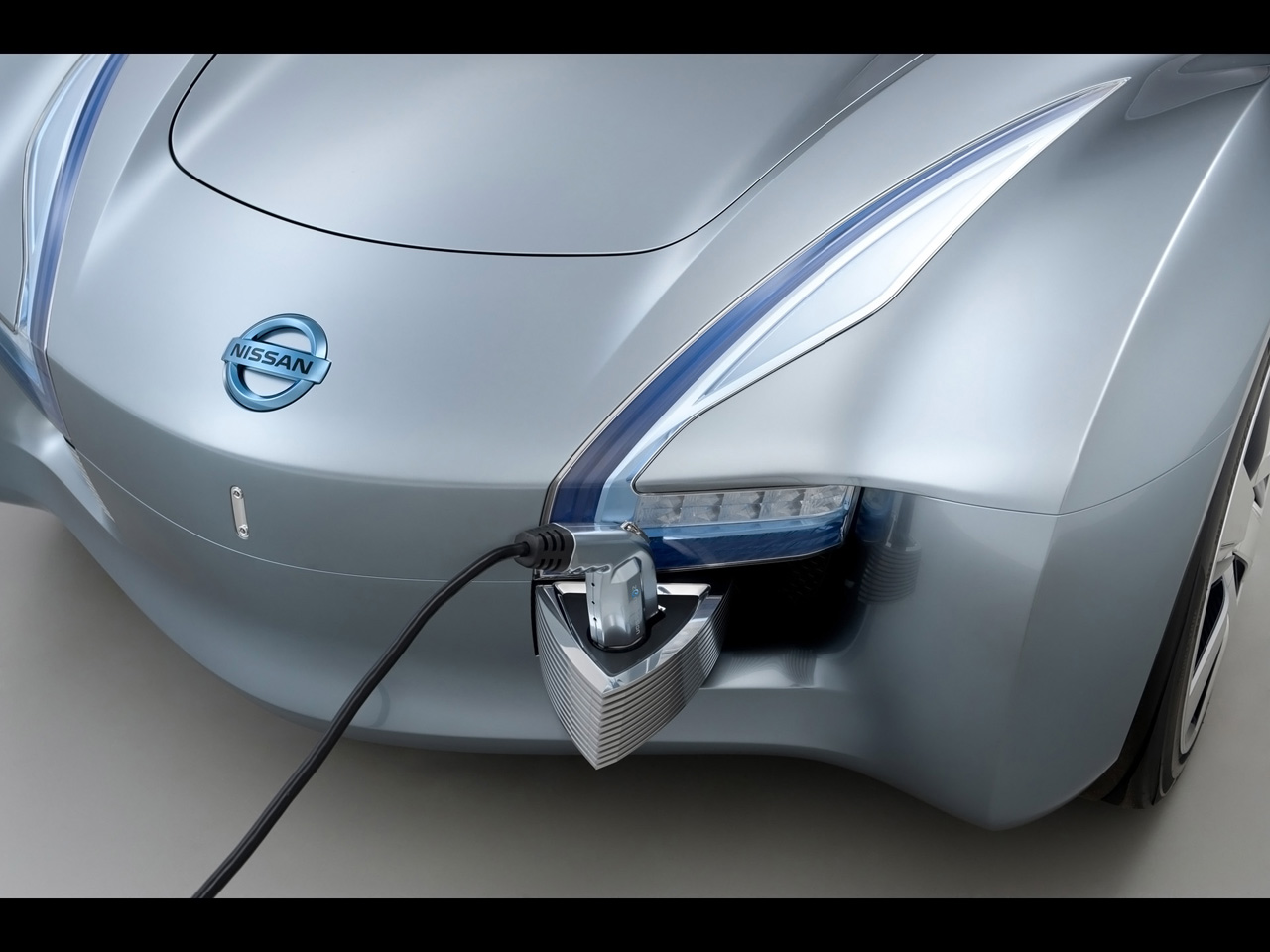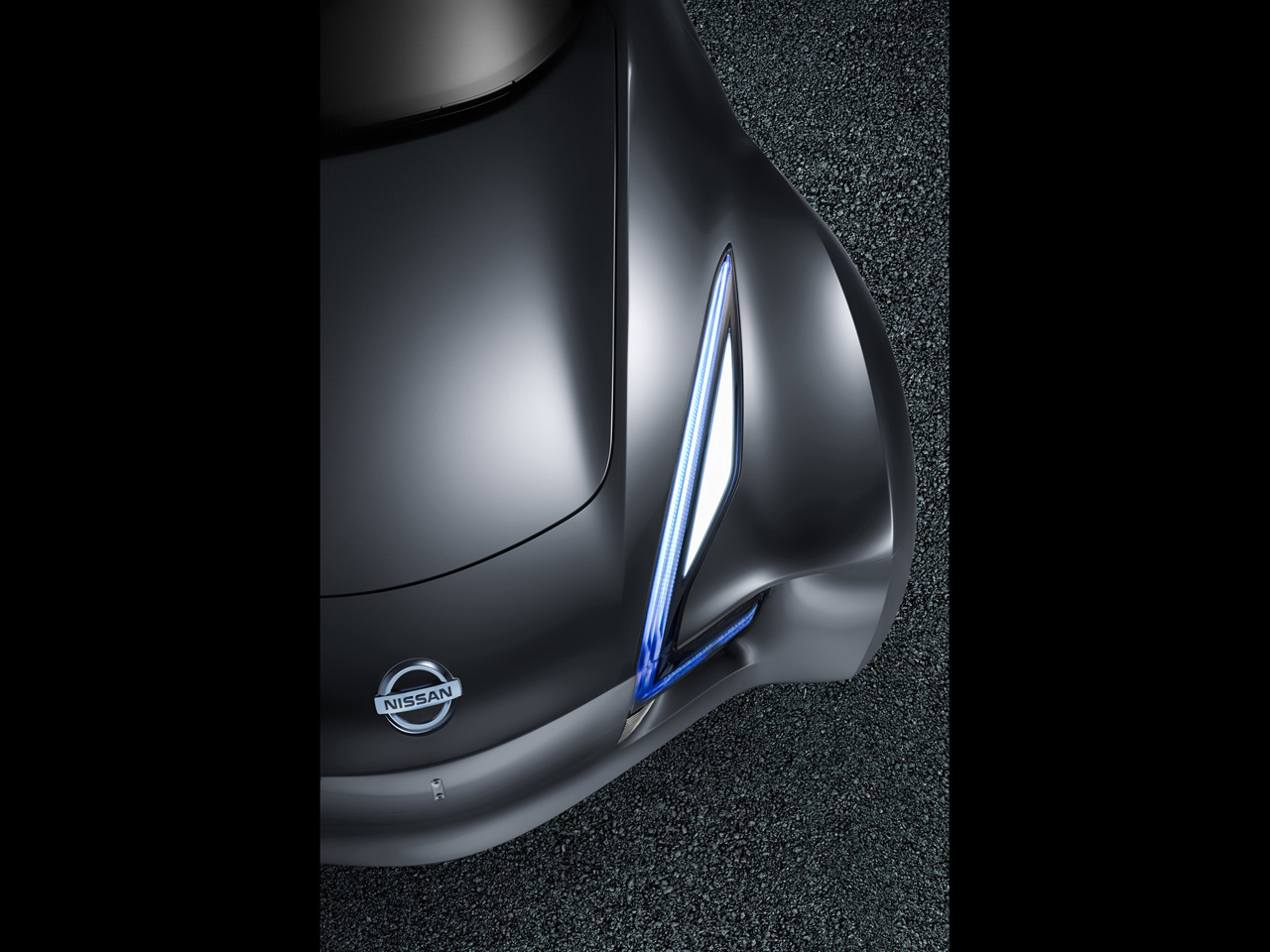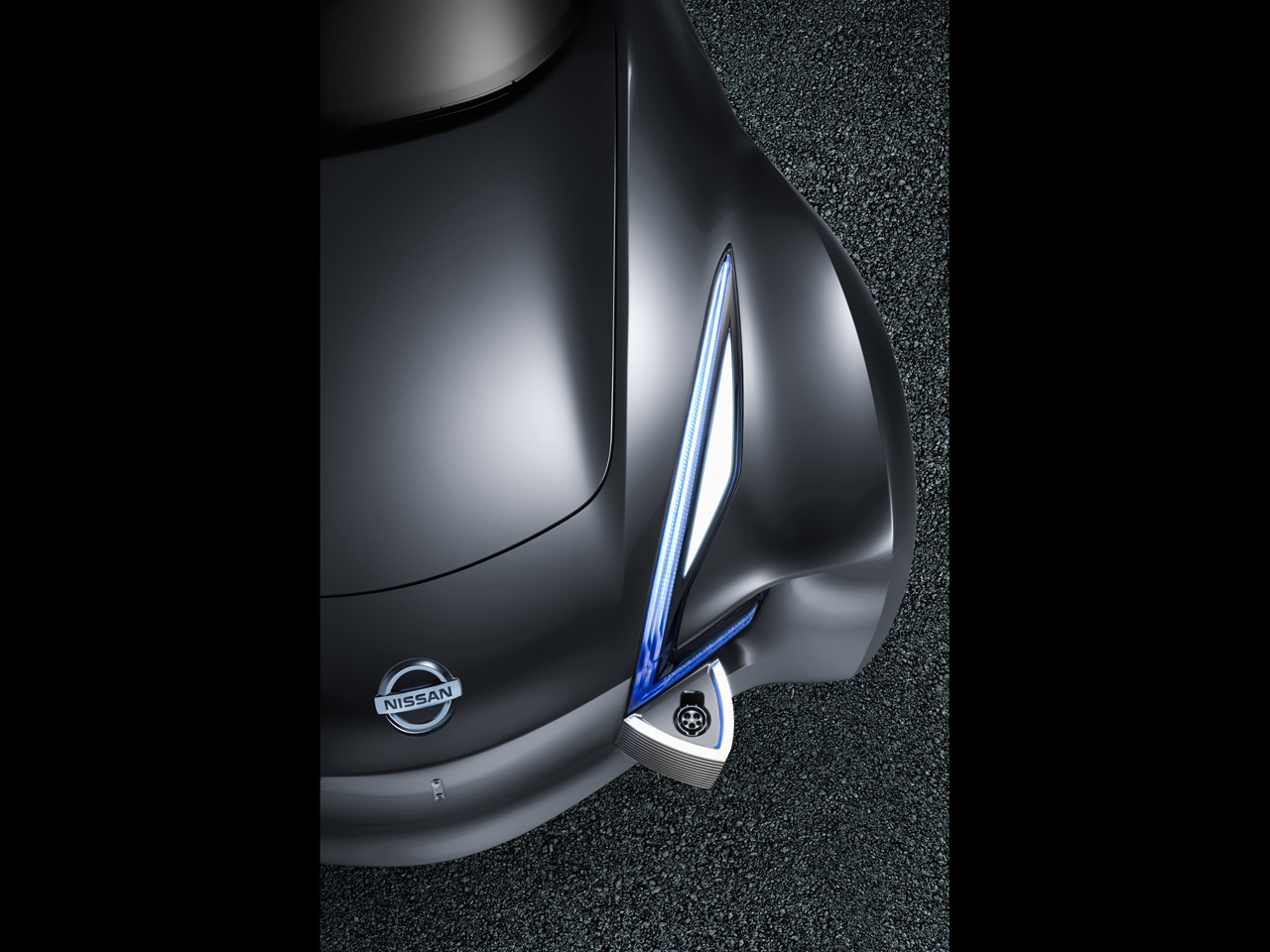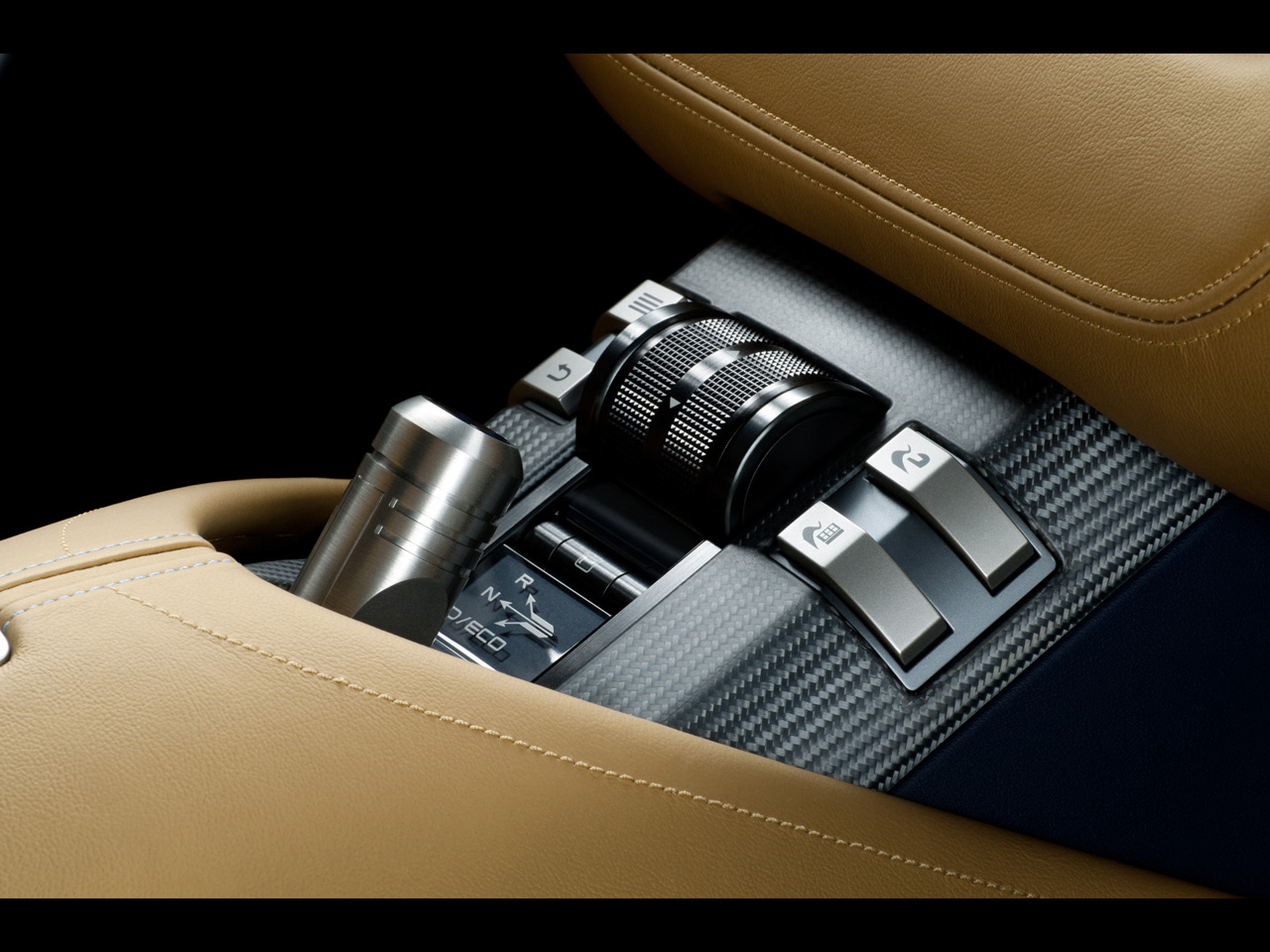2011 Nissan Esflow Concept
|
Price |
-- |
Production |
-- | ||
|
Engine |
twin electric motors |
Weight |
-- | ||
|
Aspiration |
-- |
Torque |
-- | ||
|
HP |
-- |
HP/Weight |
-- | ||
|
HP/Liter |
-- |
1/4 mile |
-- | ||
|
0-62 mph |
under 5 seconds |
Top Speed |
-- |
(from Nissan Press
Release) NISSAN ESFLOW
Putting the spark into electric vehicles
It may be a concept, but the Nissan ESFLOW electric sports car
proves it's possible to remain environmentally sympathetic without
having to give up the joy of driving.
It looks like a sports car, handles like a sports car and performs
like one too. Using technology pioneered in the award-winning Nissan
LEAF, the EV concept shows that driving can still be as much fun
tomorrow as it is today.
At a glance
* ESFLOW - a pure EV
sports car concept
* Rear-wheel drive two-seater
* Two electric motors, each driving a rear wheel
* Laminated lithium-ion batteries mounted low for best weight
distribution
* Dramatic styling with wraparound windscreen for unobstructed
visibility
* 0-100km/h in under 5 seconds
* Over 240kms on one charge
The Nissan ESFLOW
Nissan has a reputation
for creating some of the most exhilarating sports cars on the
market. Nissan has also developed the world's first practical Zero
Emission family car, the Nissan LEAF.
Now Nissan has put that expertise together. It has captured the
excitement of a sports car and the environmental benefits of an
electric vehicle and blended them into one dramatic two-seater
concept: ESFLOW.
ESFLOW has been created from the ground up as a pure electric
vehicle, to give an idea how a Zero Emission sports car of the
future might look. Living ecologically has often been seen as an act
of austerity - to save one's environmental conscience sacrifices
must be made. ESFLOW is here to address that misconception.
Owning an ecologically sound car does not have to come at the
expense of driving enjoyment. The briefest glance at the ESFLOW is
enough to tell you what kind of car it is: a long bonnet leading
into a steeply raked, wrap around windscreen, the compact cabin
placing the occupants bang on the car's centre of gravity, hunched
arches over ultra-low profile tyres wrapped around six spoke wheels.
ESFLOW is unmistakably a sports car, and those in the know will
recognize its heritage - hints of classic and contemporary Nissan
sports cars abound.
Vitally, ESFLOW is not an existing ICE (internal combustion engine)
powered vehicle that has been adapted to run on electricity, but a
sports car that's been designed from the outset as a Zero Emission
vehicle. This means that Nissan's forward thinking designers have
had free rein to place the power train and batteries in the optimum
positions to benefit the car's handling and performance and
enhancing the thrill of driving.
The Car
The ESFLOW is based on existing technology, implemented in innovative ways. An attractive, head turning composite body covers an aluminium chassis, incorporating its own roll cage. The powertrain unit, which employs the same technologies installed in the Nissan LEAF, is tuned to offer a sporty driving experience.
The Powertrain
ESFLOW is rear-wheel
drive and it runs on two motors. The car's graceful proportions
allow the twin electric motors to be placed above the axis of the
rear wheels, in a mid-ship position,. These motors independently
control the left and right wheels, and so the torque is optimized to
ensure outstanding vehicle stability and control as well as
efficient power regeneration. The motors produce enough torque in an
instant for it to reach a 100kph in under 5 seconds.
Power for the motors comes from the same laminated lithium-ion
battery packs used in the Nissan LEAF, but in ESFLOW the packs are
located along the axis of the front and rear wheels. This
centralizes the mass of the car, and thus its rotation point, close
to the driver's hips. These cleverly positioned batteries enable the
car to travel over 240km on one charge.
The Chassis
An aluminium chassis has
been built around the drive train, taking full advantage of the
opportunities that Zero Emission electric propulsion provides. Power
cells are incorporated in such a way that they benefit ESFLOW's
strength and poise, not detract from them. Indeed, unlike a
conventional fuel tank, batteries do not get lighter as they provide
energy, so the car's weight distribution remains constant throughout
a drive.
The high waistline afforded by the ESFLOW's classic sports car
proportions allows strong, yet unobtrusive roll bars incorporated in
to the structure behind the seats to safely take the entire load of
the car in the event of a roll over, negating the need for
obtrusive, thick, reinforced A-pillars and the blind spots they
inevitably create.
This almost unobstructed view ahead will not be unfamiliar to
fighter pilots, and just as such pilots speak of "strapping their
planes on to their backs", we hope ESFLOW owners will also feel the
car to be an extension of their bodies, reacting to their slightest
whims. The driver must be at the centre of the sports car both
physically and metaphorically.
The Body
The ESFLOW is
undoubtedly an attractive car. Crisp, clean lines not only convey
the purity of its sporting potential, but suggest the clarity of
electric power. The colour scheme chosen for the concept car is
inspired by glaciers - highly reflective solidified liquid with blue
tints in its shadows. Like its ZEV concept forebears and
contemporary stable mate the ESFLOW's headlights and Nissan emblem
are tinted cool blue. The six spoke wheels contain blue carbon
inserts while the same material adorns the side sill, roof mounted
lip spoiler and lower rear bumper.
Blue LEDs accentuate the futuristic lights slashed into the bodywork
both front and rear. Where the Nissan LEAF's protrusive headlights
are used to guide airflow around the door mirrors, this is not
needed on ESFLOW as the mirrors have been replaced with minute rear
view cameras at the base of its A-pillars. The ESFLOW's front lights
do protect a secret of their own however: flip out charging points
built in to the air ducts beneath.
The Interior
Ecological minimalism
need not come at the expense of luxury. The cabin of the ESFLOW is
clean and open and weight saving has been a priority throughout its
design, but it is still a comfortable and pleasant place to sit. By
far the heaviest components in modern cars' interiors are the steel
framed, thickly upholstered and increasingly motorized seats. In
ESFLOW the seats are sculpted into the rear bulkhead of the car,
negating the need for a heavy frame. This of course means that they
are immobile, but this is of no consequence as the fly-by-wire
steering and pedals adjust electrically to the best spot to suit
each individual driver's size and preferred driving position.
The seats themselves are upholstered in gold leather and perforated
gold suede while the doors are trimmed in dark blue leather and
suede. The blue and gold motif, the colour of sparks, is continued
across the dashboard, which is also adorned with silver carbon trim,
and features four multifunction illuminated LCD displays.
The Driver
Daniel, an ESFLOW owner,
works in tech, but lives for the weekend. On Friday night after
work, he gets behind the wheels of his ESFLOW which instantly links
with his pocket PDA and determines the fastest route to his
girlfriend's home. Finding street side parking is a cinch as the
ESFLOW's compact dimensions allow it to slip in to the narrowest of
spaces. On Saturday he drives to a popular club to exhibit his DJ
skills and his friends are impressed by his cool EV sports car.
On Sunday he drives through the mountains for leisure. ESFLOW's
superb weight distribution and unobstructed view ahead enables him
to effortlessly nail every apex, every time. His descent from the
mountains is more relaxed and he allows the ESFLOW to overrun on the
long sweeping curves, turning the potential energy he and the car
gained climbing up the gradients back in to electrical energy he can
use once he hits the roads around Barcelona.
As his ESFLOW sips energy in its garage Daniel prepares himself for
the week ahead, batteries fully recharged.



